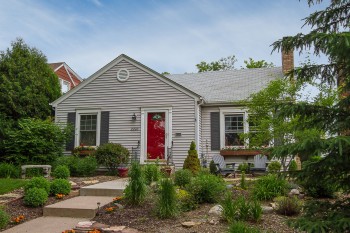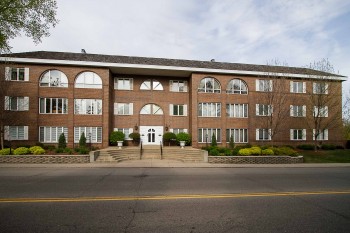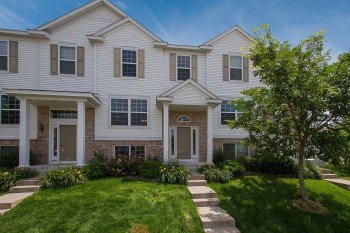Are you considering a condo? Or townhouse? Or single family home? This is Part 1 of a special 4 part article will discuss various pros and cons of each style of living.
In this part, we’ll cover the definition of each of these types of home, and where they are usually found in the Twin Cities area.
 Single Famliy Homes
Single Famliy Homes
Of course we all know what this is, but I’ll briefly describe it so that we can contrast how it differs from the other types of housing. A single family home is literally just that, a home for a single familly. It is usually a single dwelling on a parcel of land. This is the prevalent type of housing in the Twin Cities. It usually has 2 to 4 bedrooms and a couple of bathrooms, although there are many exceptions. As agents we usually refer to a house as a 4/2 (4 bedroom / 2 bathroom) or 3/1 (3 bedroom / 1 bath). Sometimes we’ll tack on other numbers such as 4/2/2/2100 (4 bedroom / 2 bathroom / 2 car garage / 2400 finished square feet).
Condos or Condominium
 A condo is usually a larger building where many people purchase a single unit in the complex. They can range anywhere from 4 units to 50 units to 200 units or more in the same complex. Often times these buildings, especially the larger ones, will have shared amenities that can include a weight room, sauna, indoor pool, outdoor pool, tennis courts, party rooms, and more. The smaller units usually don’t have as extensive of amenities. Often times, these are converted from apartment buildings or 4-plexes, or 8-plexes into condos. There are high-rise condo buildings which we define as more than a 4 story building, and low-rise condo buildings which we define as 1-3 stories. Almost all condos have a common security entrance where the mail boxes are also usually located. Condos are a part of what we call “association living”.
A condo is usually a larger building where many people purchase a single unit in the complex. They can range anywhere from 4 units to 50 units to 200 units or more in the same complex. Often times these buildings, especially the larger ones, will have shared amenities that can include a weight room, sauna, indoor pool, outdoor pool, tennis courts, party rooms, and more. The smaller units usually don’t have as extensive of amenities. Often times, these are converted from apartment buildings or 4-plexes, or 8-plexes into condos. There are high-rise condo buildings which we define as more than a 4 story building, and low-rise condo buildings which we define as 1-3 stories. Almost all condos have a common security entrance where the mail boxes are also usually located. Condos are a part of what we call “association living”.
Townhouses or Townhomes
A townhouse is more like a San Francisco row house. The building is common to the units, but each unit usually has a separate entrance, and a separate garage. More often than not, these are 2 or 3 story buildings that are built above the garage. These can range anywhere from 4 units per building to 8 or 12 units per building. Often times, more than 1 building will be incorporated into the same complex yielding 40-80 units in 1 complex. Townhouses are also part of what we call “association living”.
Differences between townhouses and condos
The main difference is how the unit was legally defined. With a condo, you only own what’s called the “air space” in the unit, plus a percentage of the common areas. With a townhouse, you also own a piece of the land, or “lot.” That’s the official difference, but there are condos that look like the photo below as well. Other differences include amenities. A condo may have a pool, workout room, shared dining room, shared kitchen, and other in-building amenities. A townhouse may have a “shared guest house” that contains a workout room, a party room, maybe even a pool. It all really depends on the association.
There are other practical differences such as the heating system. You will usually find that townhouses have their own furnaces, while condos rely on a shared heating system. Usually, but not always. The location of the mailboxes may be totally different, elevator access is usually found in high-rise condos, but almost never in a townhouse.
Association Living
 What is an association and how does it affect living in one? An association is usually a non-profit corporation whose members are the owners of all the units in the complex. They elect a board of directors that manage the association. There are specific by-laws and rules and regulations that owners must agree to follow. Blah, blah, blah… But what does it mean to ME?
What is an association and how does it affect living in one? An association is usually a non-profit corporation whose members are the owners of all the units in the complex. They elect a board of directors that manage the association. There are specific by-laws and rules and regulations that owners must agree to follow. Blah, blah, blah… But what does it mean to ME?
Well, association living usually means paying a monthly association due that covers things like: lawn care, snow removal, insurance on the building, repair fund, building maintenance, sanitation, common areas, shared amenities and more. What are shared amenities? IF a complex has a pool, a weight room, a guest room, a woodshop, the association covers these. What about building maintenance or repair fund? Part of your dues goes to cover normal building maintenance, as well as a fund to cover the larger items such as roof or siding, or heating plant.
Is heat covered? Sometimes. Some buildings have a common heating plant like a large central boiler. In this case, heat is covered. In most circumstances, townhouses do not have heat covered, as each unit has its own heating plant. But in condos, heat is usually covered.
What else do I need to know about associations? There are often times restrictions on allowable pets. Some complexes may not allow any pets at all, while others may be totally open to them, while others may have height and weight restrictions. The association usually limits how much you can change your unit in terms of changing walls or exterior paint colors and trim.
You should also check out the reserve fund to make sure the association has been adequately saving for the next roof repair, or the next driveway resurfacing project.
There also may be rental restrictions in place. This is usually done to limit the number of units that can be rented on a regular basis, in any given association.
When purchasing an association maintained unit, it is important to review the association documentation as well as the financial documents. These can help you determine whether that particular association is the right fit for you, as well as financially stable. In Minnesota, you have what’s called the “10 day right of rescission.” This means after signing the purchase agreement, you’ll receive the association documents and have 10 days to review the documents. If you disagree with the association for any reason, you can back out within those 10 days, guaranteed.
